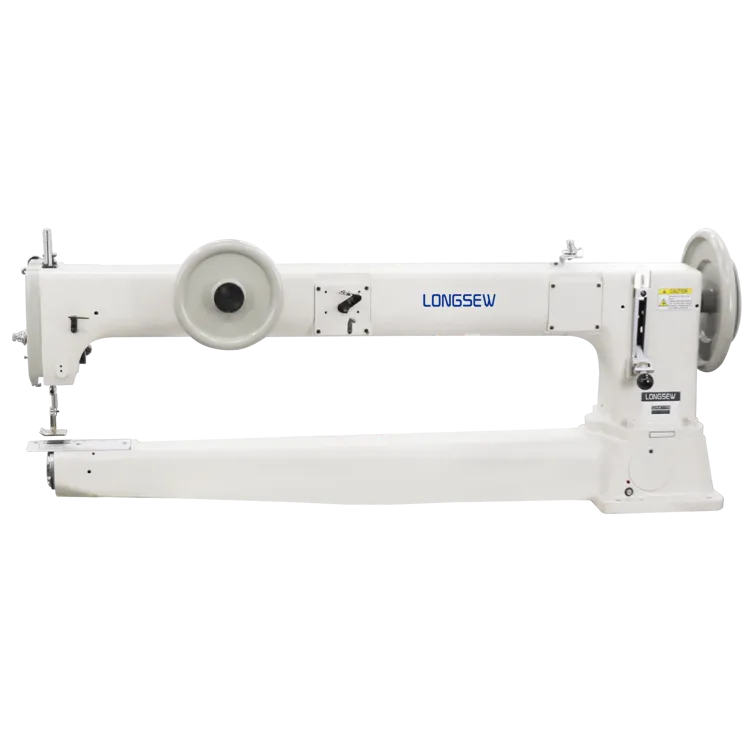Exploring the Advantages of Automatic Sewing Machines for Efficient Crafting
The Evolution and Impact of Auto Sewing Machines
Sewing has been a fundamental skill for centuries, providing the means for individuals to create and mend their garments. Yet, the advent of auto sewing machines in the late 19th and 20th centuries revolutionized the way we approach textile creation, transforming a historically manual process into an efficient, automated practice. The auto sewing machine has played a crucial role in the textile industry, and its impact continues to be felt today.
The Birth of the Sewing Machine
The first functional sewing machine was invented by Elias Howe in 1846, but it wasn't until Isaac Singer introduced his version in 1851 that the machine gained popularity. Singer's design allowed for greater efficiency, helping individuals produce garments much faster than by hand. However, it wasn't until the fine-tuning of manufacturing methods that we began to see the development of auto sewing machines in the early 20th century.
These machines introduced the concept of automation in sewing processes, allowing for continuous operation and precision stitching. As technology advanced, so too did the capabilities of sewing machines. Manufacturers began to integrate features such as automatic threading, speed control, and programmable functions, giving rise to what we now commonly refer to as auto sewing machines.
Key Features of Auto Sewing Machines
Modern auto sewing machines are marvels of engineering, offering a plethora of features designed to enhance user experience and productivity. One of the standout features is automatic needle positioning, which simplifies the sewing process by ensuring that the needle is always in the correct position before and after sewing. This allows users to work with multiple layers of fabric without the risk of uneven stitching.
Another significant advancement is the inclusion of computerized controls. Many auto sewing machines now come with LCD screens that provide users with access to a variety of stitch options, patterns, and customization settings. With just a few taps, users can select the perfect stitch for their project, from simple straight seams to elaborate embroidery designs. This level of flexibility empowers both hobbyists and professionals, enabling them to be more creative in their sewing endeavors.
Additionally, some modern machines are equipped with automatic thread cutters, which eliminate the need for users to manually snip threads, resulting in a more efficient workflow. These enhancements not only save time but also ensure cleaner finishes, which is especially important in professional settings where quality is paramount.
auto sewing machine

The Economic Impact
The integration of auto sewing machines into the textile industry has had profound economic implications. Factories employing these machines can produce clothing at an unprecedented scale, significantly reducing labor costs and manufacturing times. As a result, clothing has become more affordable and widely accessible to consumers around the globe.
However, the rise of automation has also sparked debates concerning job displacement. As machines replace manual labor in some sectors, there is concern about the loss of traditional sewing skills. Workers in the textile industry have had to adapt, focusing on maintaining and operating these machines, along with developing other complementary skills.
The Future of Auto Sewing Machines
Looking forward, the evolution of auto sewing machines will likely continue to be influenced by technological advancements. Innovations such as artificial intelligence and machine learning are increasingly being incorporated into the design and operation of sewing machines. These technologies could lead to even smarter sewing machines that anticipate user needs, suggest optimal sewing settings, and even learn from previous projects to enhance performance.
Furthermore, the growing trend of sustainable fashion signifies a shift in consumer preferences. As more people seek environmentally friendly options, manufacturers may respond by developing auto sewing machines that use eco-conscious materials or methods. Additionally, these machines could facilitate the efficient recycling of textiles, playing a crucial role in the circular economy.
Conclusion
Auto sewing machines represent a significant milestone in the history of textile production. From their inception to the advanced technology we see today, these machines have drastically transformed the industry, making sewing more efficient and accessible. While they have brought about both opportunities and challenges, one thing is clear the future of sewing will continue to evolve, driven by innovation and the ever-changing demands of society. As we embrace these advancements, we remain connected to a rich tradition that spans generations, blending the old with the new in a seamless tapestry of creativity.
-
Boost Production Efficiency with a Pattern Sewing MachineNewsAug.29,2025
-
Industrial Excellence with the Best Heavy Duty Sewing MachineNewsAug.29,2025
-
Precision and Power with the Best Pattern Sewing MachineNewsAug.29,2025
-
Reliable Bulk Packaging Starts With the Right FIBC Sewing MachineNewsAug.29,2025
-
Advanced Packaging Solutions: Elevate Productivity with Jumbo Bag Sewing Machine and Industrial Stitching EquipmentNewsAug.29,2025
-
High-Performance Solutions for Bulk Packaging: FIBC Sewing Machine and MoreNewsAug.29,2025
-
Maximize Efficiency with an Industrial Cylinder Arm Sewing MachineNewsAug.28,2025


























